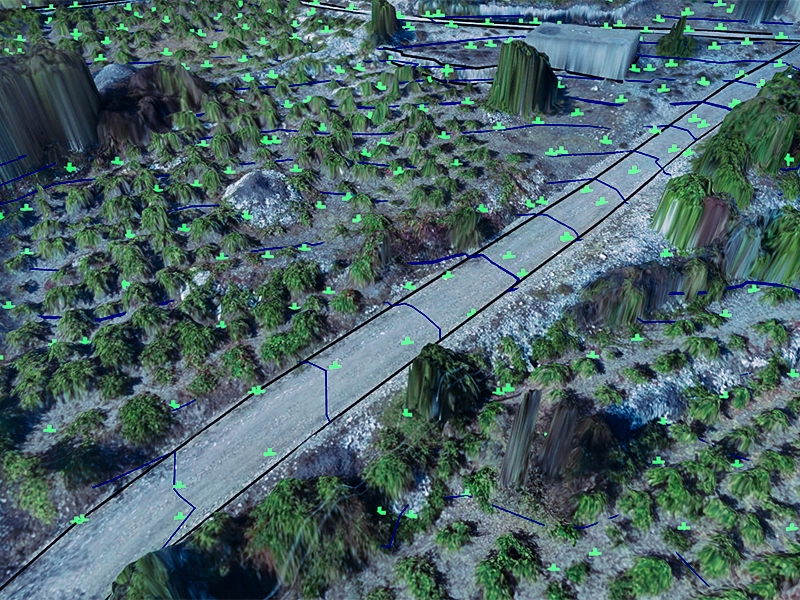How Setting Out Engineering Ensures Accurate Building Layouts and Measurements
Important Devices and Strategies in Establishing Out Engineering
The technique of establishing out design counts greatly on a collection of necessary devices and strategies that underpin the precision and performance of project execution. What implications does this hold for future design practices?
The Value of Accurate Dimensions

The importance of exact measurements expands past plain conformity; they are important to the general efficiency of design procedures. Errors can lead to worldly waste, project delays, and raised labor costs, ultimately impacting the task's bottom line. Precise dimensions enhance the quality of the last item, making sure that it performs as intended and fulfills the assumptions of stakeholders.
Moreover, the value of precise dimensions appears in different engineering techniques, consisting of civil, mechanical, and electrical design. Each field requires an unique strategy to measurement, yet the underlying need for precision continues to be continuous. As projects come to be significantly intricate, the dependence on accurate dimensions will just intensify, highlighting the demand for constant advancements in measurement methods and technologies. Thus, fostering a society that focuses on accuracy is essential for the future of engineering.
Vital Devices for Laying Out
Laying out, a critical stage in the engineering and building procedure, relies heavily on details devices that make sure precise place and positioning of frameworks. Among these devices, the surveyor's degree sticks out, giving specific horizontal measurements important for developing recommendation points. This tool enables designers to establish altitude modifications and preserve uniformity across the job website.
The total station is an additional essential tool, integrating electronic distance dimension with angular measurement capacities. This technology improves efficiency and accuracy in recording spatial data, enabling reliable website format and planning.
Furthermore, using measuring tapes and marking tools, such as chalk lines or risks, is fundamental for briefly marking limits and essential points on the site. These fundamental tools, though simple, are crucial for guaranteeing clear communication among the construction group concerning project requirements.
Finally, general practitioner modern technology has actually gotten traction in establishing out processes, providing real-time positioning data and considerably boosting accuracy over traditional approaches. Jointly, these essential devices form the foundation of reliable laying out techniques, ultimately adding to the successful execution of engineering and building and construction tasks.
Advanced Surveying Techniques
Advanced surveying methods play a crucial function in boosting the precision and efficiency of design jobs. These techniques encompass a variety of approaches that supply accurate information for style and construction. Typical approaches, such as leveling and triangulation, have actually progressed into more innovative techniques, including Complete Terminal surveys and International Navigation Satellite Systems (GNSS)
Complete Station devices incorporate electronic theodolites with range measurement capabilities, permitting property surveyors to collect precise area data with terrific speed. This modern technology dramatically reduces mistakes connected with hand-operated dimensions and supplies real-time data processing. GNSS uses unequaled accuracy for large tasks by using satellite signals to identify specific positioning, which is vital for making certain and aligning frameworks conformity with design specs.
In enhancement to these devices, progressed techniques also integrate geospatial evaluation and 3D modeling. These approaches make it possible for designers to visualize terrain and site problems much more effectively, helping with far better decision-making throughout the preparation stage. By employing these sophisticated surveying strategies, design jobs can attain better accuracy in design, lower rework, and ultimately enhance overall task success.
Digital Technology in Engineering
The integration of digital modern technology has actually revolutionized engineering practices, enhancing both performance and precision throughout numerous techniques. Devices such as Building Information Modeling (BIM) facilitate the visualization and management of complicated jobs, permitting designers to team up perfectly and make educated decisions. This innovation makes it possible for the creation of detailed 3D models, which can be examined for architectural integrity and performance before building begins.

The application of Find Out More artificial knowledge and machine knowing in engineering processes even more enhances predictive upkeep and optimization of sources. In general, electronic technology is reshaping the design landscape, driving innovation, and making sure that projects are completed with better effectiveness and lowered threat.
Finest Practices for Application
When implementing digital innovation in design, it is crucial to establish a critical approach that aligns with job objectives and business capabilities. A thorough evaluation of existing process and innovation framework is important to identify spaces and chances for enhancement. Involving stakeholders early while doing so cultivates cooperation and ensures that the technology meets individual requirements.

Job supervisors should embrace a repetitive implementation method, permitting for adjustments based upon real-time responses and efficiency evaluations. This agile method not only alleviates dangers however likewise advertises constant enhancement by including lessons found out.
Verdict
To conclude, the assimilation of crucial tools and advanced techniques in laying out design is essential for making sure precision in measurements and successful task implementation. This Site Using tools such as property surveyor's levels, total stations, and GPS technology, along with modern-day evaluating approaches, boosts accuracy and decreases the possibility of errors. Adopting best practices in implementation further maximizes these procedures, inevitably fostering improved job outcomes in the design and construction industries.
The self-control of establishing out engineering depends heavily on a collection visit homepage of essential devices and methods that underpin the accuracy and performance of job execution.In addition, the relevance of precise measurements is noticeable in different engineering techniques, including civil, mechanical, and electrical design. By utilizing these advanced evaluating techniques, engineering jobs can achieve better accuracy in layout, lower rework, and eventually improve total project success.
On the whole, digital modern technology is reshaping the design landscape, driving advancement, and guaranteeing that tasks are finished with greater effectiveness and reduced danger (setting out engineering).In conclusion, the combination of essential devices and progressed strategies in setting out engineering is vital for ensuring accuracy in measurements and successful task execution